- Mt. Kailash Tour
- Kailash Mansarovar Overland Tour
- Kailash Heli Tour
- Kailash Yatra via Lucknow
- Kailash Mansarovar Tour via Lhasa
- Kailash Lhasa EBC Tour From Beijing
- Kailash Heli tour via Kerung
- Kailash via Lhasa In Kerung Out
- Lhasa EBC Kailash Tour
- Kailash Mansarovar Yatra
- Mount Kailash Yatra By Helicopter
- Kailash Nandi Kora
- Kailash Tour via Humla Simikot – 20 Days
- Mount Kailash Tour : Best Package and Cost for 2025
- Trekking
- Tours
-
- Outbound
-
- Activities
- Company
- Travel Info
- Contact
WhatsApp
+977-9851035239
Email Us
[email protected]
Everest Panorama Trek
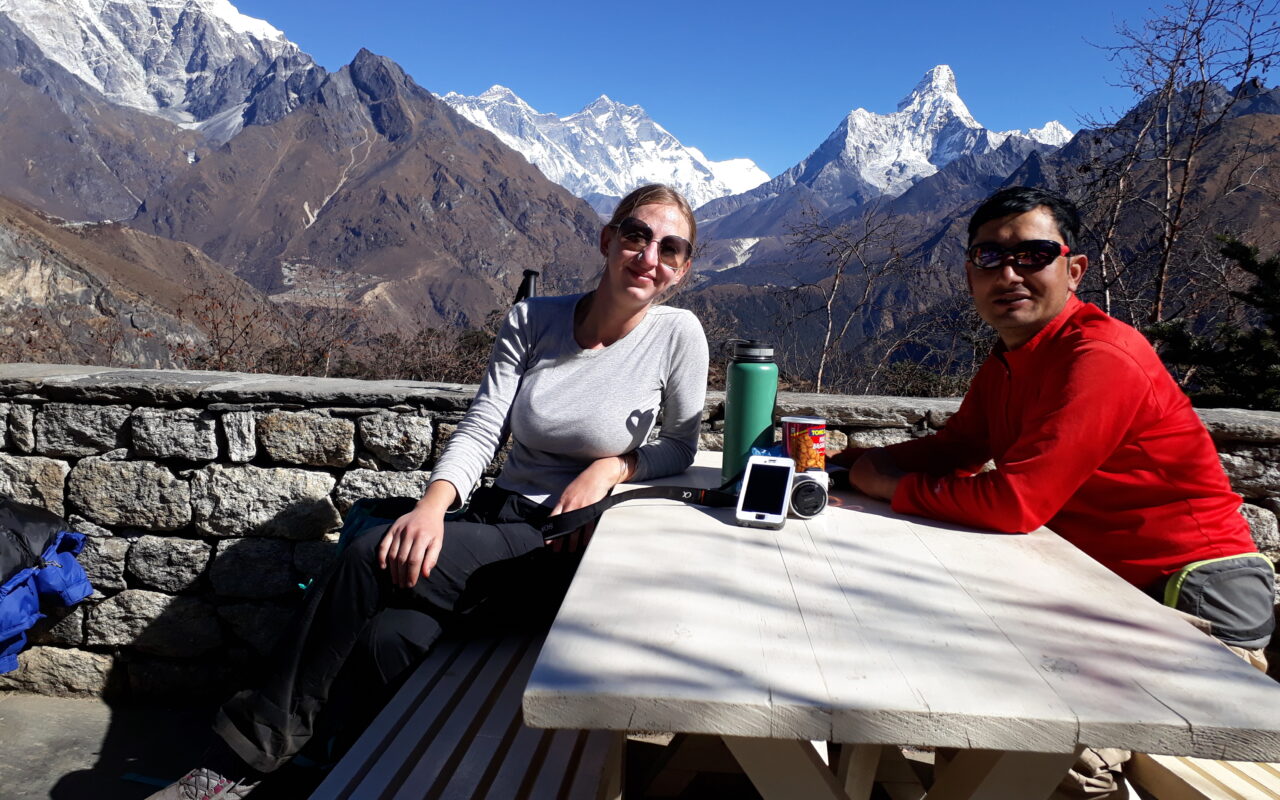
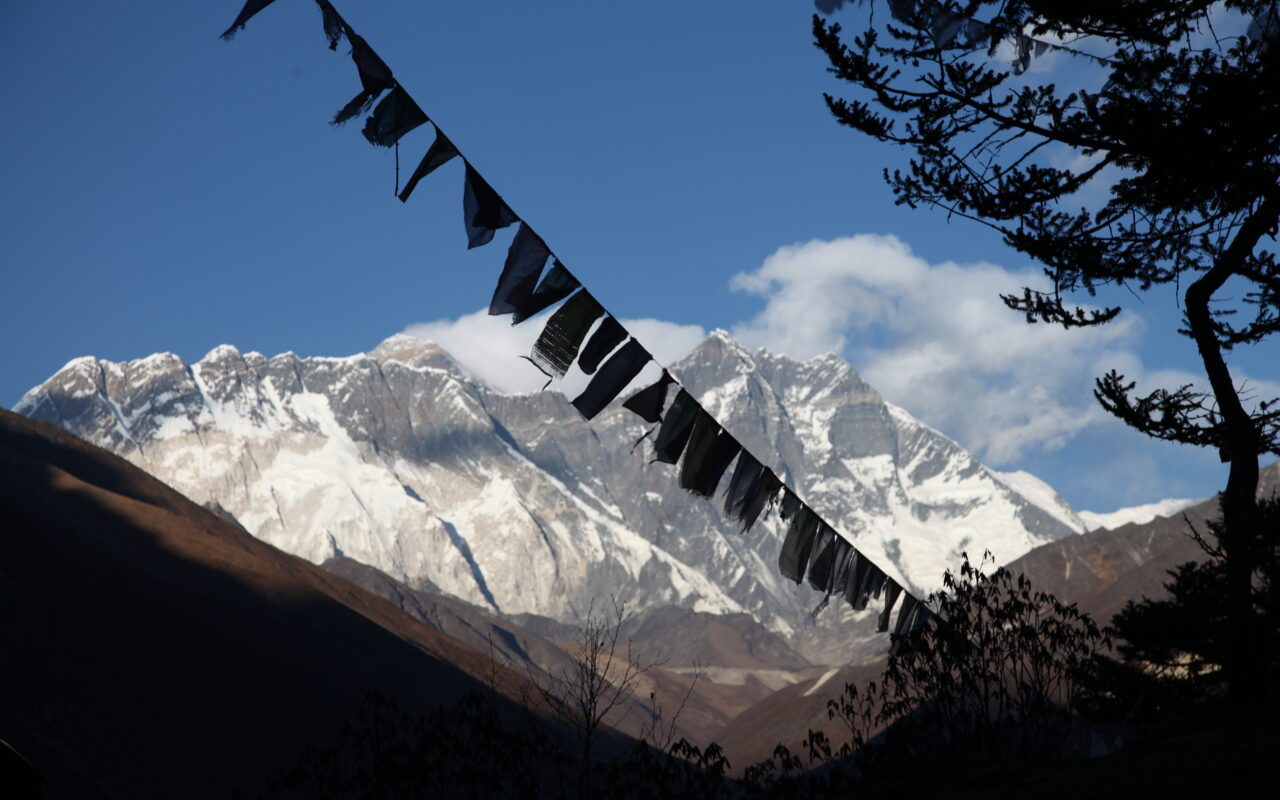
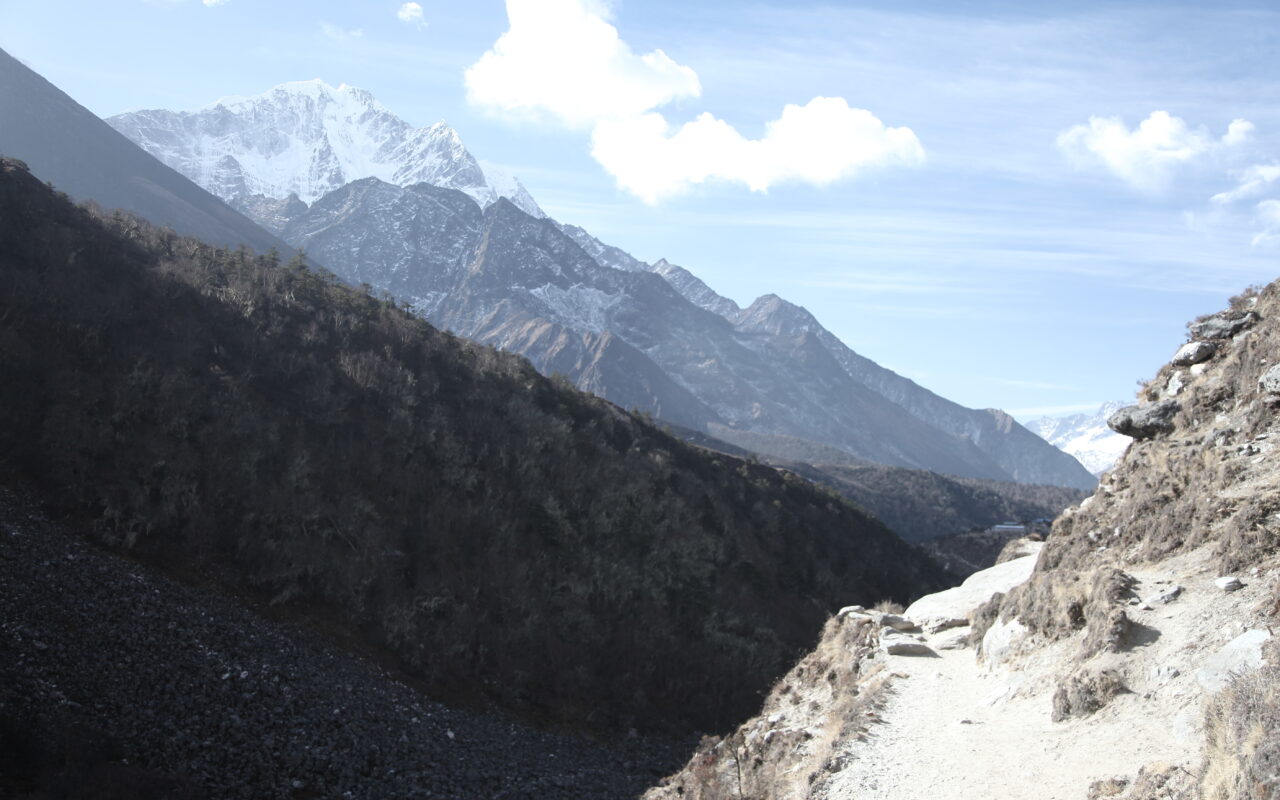
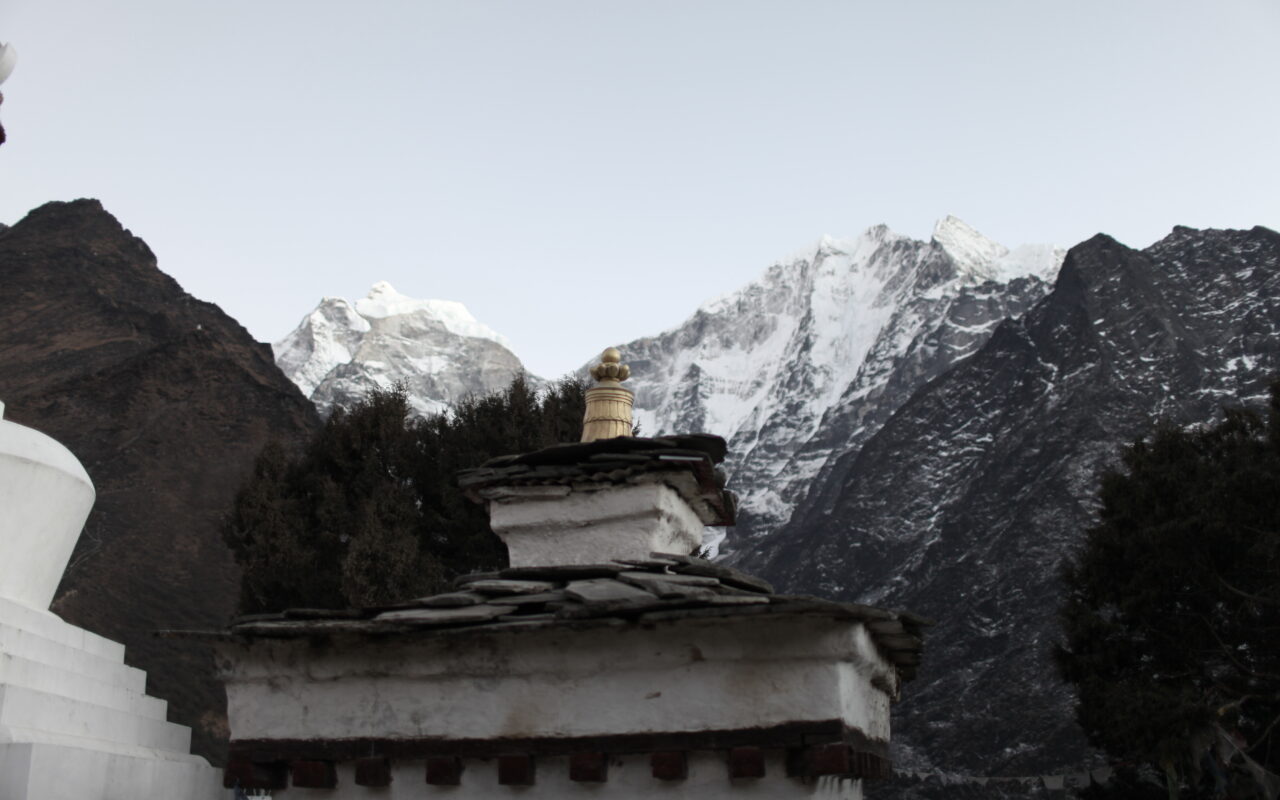
Trip Duration
10 DaysTrip Difficulty
EasyMax. Altitude
4,000m. / 13,123ft.Activity
Trekking, Hiking & SightseeingDestination
NepalGroup Size
2-20Accommodation
3-4 star hotel in kathmandu, Normal hotel in TrekkingHighlights of Everest Panorama Trek
Certainly, The Everest Panorama Trekking route is a spectacular adventure that offers a range of highlights and memorable experiences. Some of the main highlights of the trek are below:
- Stunning Mountain Views:
The Everest Panorama Trekking route is renowned for its breathtaking views of the world’s tallest mountains, including Mount Everest, Lhotse, Nuptse, and AmaDablam. The highlight of the trek is undoubtedly the panoramic views of these stunning peaks from famous viewpoint at Tengboche Monastery. The views are truly awe-inspiring and will lasting memories.
- Unique cultural experiences:
The Everest region is home to the Sherpa people, who are renowned for the hospitality and warmth. Trekking through the region offers a chance to experience their unique culture, traditions, and way of life. You’ll have the opportunity to visit traditional Sherpa villages, interact with locals and learn about their customs and beliefs.
- Beautiful forests and landscapes:
The trek takes you through the range of the stunning landscapes, from the huge forest of rhododendron and oak trees to high altitude valleys and meadows. The scenery is truly wonderful and provides a wonderful backdrop for the trek.
- Namche Bazaar:
Namche Bazaar is a bustling market town and the gateway to the Everest region. It’s a vibrant and lively place that offers a range of amenities and services for trekkers. The town I situated in a beautiful location, surrounded by stunning mountain scenery.
- Tengboche Monastery:
Tengboche Monastery is one of the most famous and important monasteries in the region. It’s situated at an elevation of 3,867 meters and offers stunning views of the Himalayas. The monastery is renowned for the beautiful architecture, intricate wall paintings, and spiritual significance.
- Sagarmatha National Park:
The Everest Panorama Trekking route passes through the Sagarmatha National Park, which is home to wide range of flora and fauna. The park is a UNESCO World Heritage Site and offers a chance to see rare and endangered species, such as the snow leopard and red panda.
- High altitude trekking:
The trek takes you to high elevations, with the highest point at Tengboche Monastery at 3,867 meters. Trekking at high altitude can be challenging but also offers a unique and rewarding experience.
Price starts
US$ 600
We offer group discounts
-
1 -
4 person
US$ 700
-
5 -
10 person
US$ 600
-
11 over
9999
US$ 550
Total Cost:
US$ 700
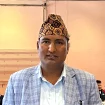
Need Help?
Ask to Travel Expert
Trip Overview of Everest Panorama Trek
The Everest Panorama Trekking route is a popular destination for those looking experience the stunning beauty of the Himalayan Mountains. This trek offers breathtaking views of some of the world’s tallest peaks, including Mountain Everest, Lhotse, Nuptse, and AmaDablam.
One of the great things about this trek is that it is considered to be relatively easy compared to other trekking routes. This makes it a great option for individuals with varying fitness level, as well as for families and groups with different experience levels.
The trek begins with a flight to Lukla, a small town in the Khumbu region of Nepal. From there, trekkers will make their way to Namche Bazaar (a bustling market town and the gateway to the Everest region. Along the way trekkers will pass through picturesque Sherpa villages, beautiful forests, and stunning scenery.
While the trek is relatively easy, there are some key factors to consider before embarking on this adventure. Altitude sickness can be a serious concern, as the trek takes you to high elevations. It’s important to acclimatize properly, stay hydrated, and listen to your body to avoid any altitude-related issues. Additionally, the weather in the Himalayas can be unpredictable, so it’s important to pack the right gear and be prepared for changing conditions. It’s important to be in a good physical condition before embarking on the trek.
Overall, the Everest Panorama Trekking route is a stunning adventure that offers breathtaking views of the Himalayas. With a little preparation and the right mindset, it’s an experience that will stay with you for a lifetime.
Best seasons for Everest panorama trek:
The Everest Panorama Trekking is the popular trekking destination in the Himalayas of Nepal. The best seasons for this trek are from February to the end of April and from September to the end of December.
February to the end of April:
This period is the spring in Nepal, and it is one of the best times to trek to Everest Panorama. The weather during this time is clear and dry, with stable temperatures, making it easier for trekkers to enjoy the views and complete the trek without any major hindrances. During this time, the rhododendron flowers bloom, and the hills are covered with a colorful blanket of flowers. This creates a beautiful landscape, and the clear skies offer excellent views of the mountains.
September to the end of December:
This period is the autumn season in Nepal and is another great time Everest Panorama Trekking. The weather at this time is dry and clear, with stable temperatures. This time of year is known for its stunning views of the mountains, and the trekking trials are less excellent views of mountains, and the challenging colors of the leaves on the trees create a beautiful landscapes.
Overall both the spring and autumn seasons offer great weather conditions for the Everest Panorama Trekking. However, proper gear and equipment are essential to ensure a safe and enjoyable trekking experience.
List of equipment needed:
- Trekking boots: A good pair of trekking boots is essential. Make sure they are comfortable, waterproof, and have a good ankle support.
- Backpack: You’ll need a sturdy backpack to carry your gears, water, and snacks during the trek.
- Warm clothing: The temperature can be quite cold during the trek, so it is essential to have warm clothing, such as down jacket, thermal pants and shirts, fleece jackets and gloves.
- Trekking pants: It’s important to have comfortable and durable trekking pants that are quick- drying and moisture-wicking.
- Sun protection: The sun can be intense at high altitudes, so it’s essential to have sunglasses, sunscreen, and a hat.
- Water bottles: You’ll need to stay hydrated during the trek, so it is important to carry water bottles or hydration system.
- Headlamp or flashlight: You may need to trek in the dark, so a headlamp or flashlight is essential.
- Trekking poles: trekking poles can help you balance and reduce the strain on your legs during the trek.
- First aid kit: It’s always a good idea to keep first aid kit with you, including medicines for altitude sickness, pain relief, and wound care.
- Sleeping bag: You will need a warm and comfortable sleeping bag for the night spent in teahouses during the trek.
How difficult is Everest Panorama Trekking ?
The Everest Panorama Trek is considered to be a moderately challenging trek in the perspective of most travellers. Compared to the Everest Base Camp Trek, the Panorama Trek is not as difficult, but it still requires a moderate level of physical fitness and endurance. It is a good option for families with children who are looking for an adventure and want to experience the beauty of the Himalayas.
The trek usually takes around 5 to 7 days and covers a distance of approximately 35 kilometers, with an average altitude of 3,500 meters. The trek involves walking on uneven terrain, rocky paths, and uphill sections, but the pace is generally relaxed, allowing trekkers to acclimatize to the altitude and enjoy the stunning panoramic views of Everest and other peaks in the region.
Overall, the Everest Panorama Trek is a great option for those looking for a less tough alternative to the Everest Base Camp Trek, while still experiencing the beauty of the region and the culture of the Sherpa people. It is important to note that proper preparation, including physical fitness training and proper gear, is necessary for a safe and enjoyable trek.
Why should you prefer Family Adventure trek for Everest panorama trekking.
Choosing Family Adventure trek for Everest Panorama Trekking is a great choice for both families and teams who want to experience the trek in a safe and enjoyable way.
- Professional guides:
Family Adventure Treks are led by experienced and professional guides who are trained to work with children. They are knowledgeable about the trek and the local culture, and they are skilled in managing any issues that may arise during the trek. They are also fluent in English, which makes communication easy.
- Time punctual:
Family Adventure is designed to cater to families with children, so the itinerary is flexible and takes into account the children’s needs. We provide a time punctual schedule that allows for ample rest breaks and exploration time. The trek also includes a few extra days to acclimatize, which is important for helps in minimizing the risk of altitude sickness.
- Quality equipment:
Family Adventure trek provides quality equipment and gear to ensure the safety and comfort of the trekkers. The agency uses high- quality camping gear, trekking poles, sleeping bags, and other equipment to make the trek comfortable and enjoyable.
- Tailor-made itinerary:
Family Adventure can tailor the itinerary to meet the specific needs and interests of your family. We can provide special activities for the children and can customize the itinerary to allow for more exploration time or rest breaks.
- Local experience:
Family Adventure can arrange the local experience, allowing you to interact with locals and learn about the local culture and customs. The agency can arrange for culture experiences, such as cultural dances and local cuisine, to give your team or family a deeper appreciation of the local culture.
Detail Itinerary of Everest Panorama Trek
Day 01: Arrival in Kathmandu
Your journey to the stunning Himalayas begins with a flight to Kathmandu. Upon arrival, our representatives will welcome you at Tribhuwan International Airport and take you to your hotel for check-in. After that, you can rest and spend the night at the hotel.
Highest Altitude
1300m. (Kathmandu)Meals
BBAccommodation
HotelDay 02: Sightseeing of Kathmandu and Bhaktapur city
You will take a guided tour to visit four UNESCO World Heritage Sites in Kathmandu. The first is Kathmandu Durbar Square, where medieval kings used to live. The second is Pashupatinath, which has a sacred Lingum of Lord Shiva and a famous funeral site for Hindus. The third is Boudhanath, one of the largest stupas in the world and a holy Buddhist pilgrimage site with over 50 Tibetan monasteries. The fourth is Swayambhu, also known as the Monkey Temple, because of the large number of monkeys there. Bhaktapur Durbar Square and Patan Durbar Square are also UNESCO sites, where you can see historic temples, water spouts, and a palace with 55 windows. In Bhaktapur, you can also witness the authentic local lifestyle of the city. You will spend the night at the hotel.
Activity & Duration
SightseeingHighest Altitude
1300m. (Kathmandu)Meals
BBAccommodation
HotelDay 03: Fly to Lukla and trek to Phakding (2,610m) 30 minutes flight and 4 hours walk
We’ll drive to Tribhuvan International Airport in a private vehicle and take a scenic 30-35min flight to Lukla (2,800m). This is our starting point for trekking. After breakfast at a lodge and preparing our luggage for the porters, we’ll start our trek towards Phakding. The trail from Lukla to Phakding is mostly downhill or flat and offers views of prayer rocks and the colorful Lukla village. After around four hours of hiking, we’ll reach Phakding where we can freshen up and take a short walk to the village or nearby monasteries for acclimatization. We’ll spend the night at a hotel or lodge.
Activity & Duration
Flight, around 30 minutes and walk 4 hoursHighest Altitude
2610m. (Phakding)Meals
BLDAccommodation
hotelDay 04: Trek to Namche Bazaar (3440m/11,283ft) 5-6 hours walk
After breakfast, we’ll leave our lodge in Phakding and head towards Monju, which is the gateway to the Sagarmatha National Park. Along the way, we’ll cross many suspension bridges and pass through small settlements like Zapute, Toktok, Benkar, Chumoa, and Monju. Your leader will take care of the national park formalities at the park entrance while you can explore small tea houses and shops. The trail descends steeply to the river and crosses another suspension bridge before climbing uphill to the high Hillary Bridge. From there, we’ll hike uphill to Namche Bazaar, which offers stunning views of Mt. Everest and Mt. Kusum Khangru. We’ll spend the night at a lodge in Namche Bazaar.
Activity & Duration
Trekking, 5-6 hourHighest Altitude
3440m. (Namche Bazaar)Meals
BLDAccommodation
lodgeDay 05: Acclimatize at Namche
Namche Bazaar is a bustling trading center in the Khumbu region and an important place for acclimatization. To adjust to the high altitude, we will take a short hike to Thame, an old Sherpa village, or visit Khumjung/Khunde/Khongde. In Namche Bazaar, there are many things to do such as visiting the National Park Head office, Museum, and monasteries, or enjoying cafes, shops, bakeries, and restaurants. You can also use essential services like the post office, hospital, and high-speed internet. This is also a good time to contact your family before heading towards the base of Everest Base Camp. We will spend the night in a lodge in Namche Bazaar.
Highest Altitude
3440m. (Namche Bazaar)Meals
BLDAccommodation
lodgeDay 06: Trek to Tengboche (3,867m/12684ft) 3-5 hours walk
After having breakfast at the lodge in Namche Bazaar, we will continue our trek along the Dudh Koshi river, where we will witness breathtaking views of some of the world’s highest peaks like Everest, Nuptse, Lhotse and Ama Dablam. As we hike through the blooming Rhododendron forest, we may also spot some exotic wildlife such as musk deer, multi-colored pheasants, and Himalayan Thar. Upon reaching Sanasa, a major trail junction to Gokyo valley and Everest Base Camp, we will ascend a steep trail to reach the Tengboche monastery, the largest Gompa in the Khumbu region of Nepal. The monastery offers spectacular views of the surrounding Himalayan Mountains. We will spend the night at Tengboche.
Activity & Duration
Trekking, 3-5 hoursHighest Altitude
3867m. (Tengboche)Meals
BLDAccommodation
GuesthouseDay 07: Wandering around Tengboche and return to Namche
Today is a rest day at Tengboche where we can enjoy the breathtaking views of Mt. Everest and its neighboring peaks such as Ama Dablam, Lhotse and Nuptse. We will also visit the famous Tengboche Monastery and interact with the monks there. On day 8, we will make our way back to Namche Bazaar by descending on a steep path to the Dudh Koshi and then climbing up again. We will have the opportunity to visit a bakery located above 3800m in the mountainous region before spending the night at a guesthouse in Namche Bazaar.
Highest Altitude
3440m. (Namche Bazaar)Meals
BLDAccommodation
GuesthouseDay 08: Trek to Lukla (2,860m)
We will walk downhill from Namche after breakfast, crossing the Dudh Koshi River at the second bridge where the Bhote Koshi and Dudh Koshi rivers meet. Then, we will continue to Monjo to complete formalities at the National Park check post before heading to Phakding for lunch. After lunch, we will walk on a flat trail towards Lukla, where we will enjoy the scenery of prayer stones, rhododendron and pine forest, prayer flags, Sherpa village, and open plains. This will be the last day of our trek, and upon reaching Lukla, you can choose to spend time with your crew or enjoy some alone time to reflect on your memories of the past few days. We will spend the night in Lukla.
Activity & Duration
Trekking, 6-7 hoursHighest Altitude
2860m. (Lukla )Meals
BLDAccommodation
GuesthouseDay 09: Fly to Kathmandu
The trek comes to an end as we take a flight from Lukla to Kathmandu. We then have a farewell dinner with the clients to celebrate the completion of the trek and discuss plans for their next visit.
Activity & Duration
Flight, around 30 minutesHighest Altitude
1300m. (Kathmandu)Meals
DAccommodation
HotelDay 10: Transfer to the airport for the final departure
Our representative will take you to the airport about 2 hours before your scheduled flight. We hope you had a great experience in Nepal and enjoyed the trekking. We look forward to welcoming you back to the Himalayas in the future.
Highest Altitude
1300m. (Kathmandu)Meals
BAccommodation
HotelIncludes and Excludes
What is included?
- Airport pickups and drops in a private vehicle
- Hotel accommodation in Kathmandu with breakfast
- Teahouse accommodation during the trek
- Tented accommodation during the climb
- All meals (breakfast, lunch and dinner) during the trek and climb
- Welcome and farewell dinners
- All ground transportation on a comfortable private vehicle as per the itinerary
- English speaking, trained and experienced trekking guide (leader), climbing guide (leader) and assistant guides
- Porter service
- Staff costs including their salary, insurance, equipment, domestic airfare, food and accommodation
- Down jacket
- Leaf holidays trekking bag
- All necessary paperwork; trekking permits
- Good quality tents and kitchen utensils for camping
- Medical kit (carried by your guide)
- All government and local taxes
What is excluded?
- Nepalese visa fee
- Excess baggage charge(s)
- Extra night accommodation in Kathmandu because of early arrival, late departure
- Emergency expenses like rescues, emergency medical treatment.
- Personal insurance charges.
- International flights
- Travel and rescue insurance
- Personal expenses (phone calls, laundry, bar bills, battery recharge, extra porters, bottle or boiled water, shower, etc.)
- Tips for guide(s), porter(s) and driver(s)
Trip Reviews
Price starts
US$ 600

Need Help?
Ask to Travel Expert
